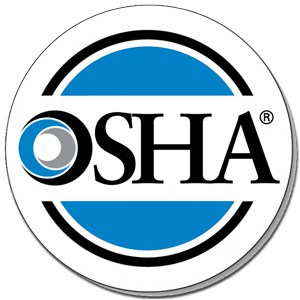Four ExxonMobil Baton Rouge refinery workers were seriously injured after an isobutane release and fire.
On Nov. 22, 2016, workers at the ExxonMobil Baton Rouge, La. refinery were preparing isobutane equipment for maintenance.
A spare isobutane pump needed to be placed into service. So, two operators set to work to replace the pump currently in operation.
While removing a malfunction gearbox from a plug valve, the plug valve loosened and came apart, releasing 2,000 pounds of flammable white vapor cloud of isobutane into the atmosphere.
The workers shouted to others in the area, warning them to evacuate. An energized welding machine located roughly 70 feet away ignited the vapor, according to surveillance video.
The resulting fire seriously injured one ExxonMobil employee and three contractors working nearby. According to a report from the Chemical Safety Board (CSB), 15 Emergency responders isolated the release and extinguished the fire about 25 minutes after the initial ignition.
As a result, the CSB conducted a full investigation, discovering “long-standing” reliability issues with gearboxes used to operate plug valves in the refinery’s alkylation unit.
Refinery management did not provide alkylation unit workers performing this operations activity with a written procedure or training on safe gearbox removal from plug valves and its associated hazards, despite it being accepted practice.
In addition, the CSB found that 15 of the 500 plug valves containing manually-operated gearboxes were an older design, which created potential for incorrect removal of the gearbox.
The agency noted the following deficiencies which led to the isobutane release and fire, including:
- Failure to identify and address the older model plug valve design and gearbox reliability issues
- Lack of a human factors evaluation to identify the older model plug valves’ design and reliability issues as well as the potential hazards associated with operating and maintaining these valves
- No written procedures detailing the steps needed to remove different models of gearboxes from plug valves to manually open or close the valve safely
- Not training workers to safely remove the various plug valve gearbox models in the alkylation unit and the hazards associated with this type of work
- An organizational culture that accepted operators removing malfunctioning plug valve gearboxes despite the lack of detailed procedures and training for safe removal.
The CSB provided key lessons for companies with chemical manufacturing facilities to follow, including evaluating human factors associated with operational difficulties that exist in your machinery, establishing detailed and accurate procedures for workers performing potentially hazardous work and providing training to ensure workers can perform all anticipated job tasks safely.
After the incident and investigation, ExxonMobil informed the agency that they made the following changes regarding its susceptible plug valves in the Baton Rouge refinery alkylation unit:
- Refinery personnel surveyed the alkylation unit to identify susceptible plug valves, identifying 15 plug valves in the alkylation unit with gearbox support brackets attached to pressure-retaining components.
- Refinery personnel established a mitigation strategy to either: replace the older plug valve design with the newer design or eliminate the support bracket and install manual levers on the valve stem for plug valve operation. The Baton Rouge refinery implemented the strategy to address all the identified susceptible valves in the alkylation unit.
- Prior to plug valve modifications, refinery personnel installed warning signs on the susceptible valves to alert workers that bolts were used to secure the support brackets to pressure-retaining components.
- ExxonMobil communicated incident learnings to its other sites and made a presentation on the incident to the petroleum refining industry at an API conference in May 2017.
- Other ExxonMobil refineries were required to conduct surveys of their plug valves to identify both gear-operated plug valves with gearbox support brackets attached to pressure-retaining components and components other than gear operator support brackets that may be mounted to pressure-retaining components.
IMEC Technologies provides Safety Management Software to increase worker safety and aid compliance. IMEC’s Safety Management Software will manage inspections and audits, provides hazard identification, incident reporting, management of corrective and preventative actions from generation to closure. IMEC provides lock out tag out software solutions that will allow users to create lockout tagout procedures using an intuitive Mobile App and Manage Lockout Tagout Procedures, also the Review and Execution of those Lockout Tagout Procedures using the Mobile App. Annual Lockout Tagout Procedures audits are conducted using a Mobile App. The Mobile Inspection App allow users to perform inspections and audits, for example the system can be used as a Fire Extinguisher Barcode Inspection Software system to manage monthly fire extinguisher inspections and general fire safety inspections and also to record safety observations and manage corrective actions, anywhere and anytime. The solution can be used as a fire extinguisher barcode inspection software system or life safety inspection system to aid compliance in Higher Education, Healthcare, Industrial and Commercial Organizations. Benefits from a Fire Extinguisher Barcode System include the elimination of paperwork and reducing the burden of compliance with regulations such as NFPA, The Joint Commission. The Incident Reporting App allows users to easily and quickly report incidents, hazards and near-misses, these are then sent to the appropriate people for action and are managed to closure. Web Apps provide features such as, setup, management, scheduling tools, analysis, reporting and dashboards etc with the ability to report incidents to government bodies such as OSHA and RIDDOR. HazMat T&T is a hazardous waste management software solution designed for Environmental Service Companies and companies who generate a large quantity of hazardous waste. The solution tracks hazardous waste from cradle to grave aiding compliance, providing accurate waste inventory, increasing waste handling efficiency, reducing risk and also helps manage waste costs. HazMat T&T Hazardous Waste Management Software can be deployed in a number of deployment scenarios, from Large Hazardous Waste Generators, tracking their hazardous waste at their site to Environmental Service and Waste Management Companies using it track and manage hazardous waste at transfer and disposal sites. For more information visit our website www.imectechnologies.com

